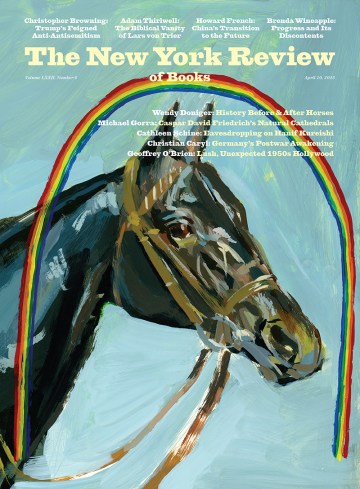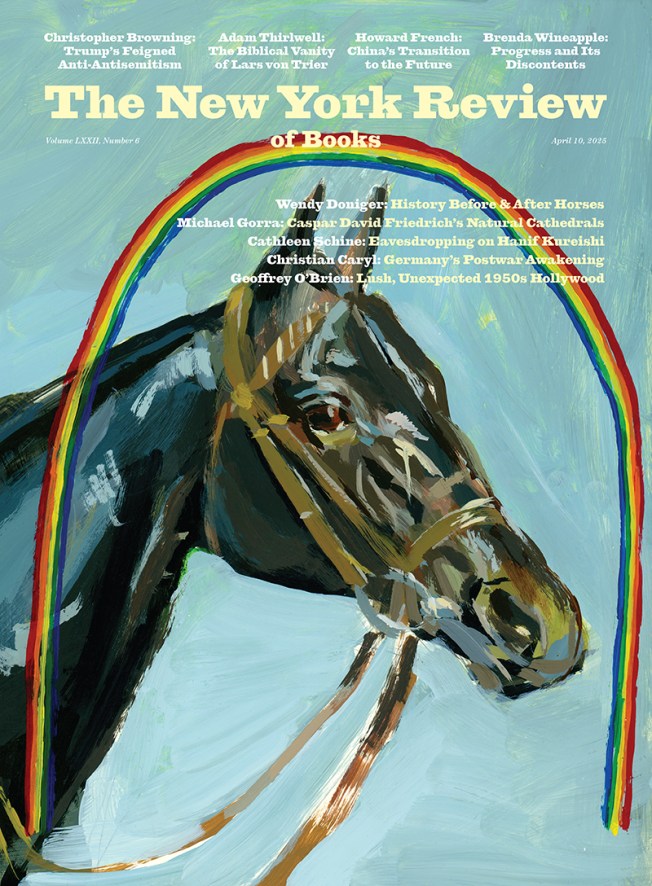The Trump administration’s attack on diversity, equity, and inclusion (DEI) programs in higher education has many college administrators running scared. The Chronicle of Higher Education, which is tracking DEI changes, has already identified forty-one campuses that have altered or dismantled their programs since Inauguration Day. The University of North Carolina ordered all its colleges to remove DEI-related courses from its requirements for specific majors or general education. The University of Alaska will not use the terms “diversity,” “equity,” or “inclusion” in any communications. Columbia “removed diversity, equity, and inclusion policy language from several of its websites.” Northwestern’s business school “removed a diversity, equity, and inclusion pathway from its MBA program.” Vanderbilt “took down its Equity, Diversity, and Inclusion page, which now redirects to ‘You at VU.’” And on Friday, the University of Virginia governing board voted to end all DEI at the state’s flagship school.
Yet not a single one of these changes was necessary. This is self-censorship. It’s what Trump wants—but it’s not what either his executive order or federal law requires. Clarifying that confusion is essential as more colleges plan their response to Trump’s attack. But so is a little courage on the part of college administrators.
In the broadest sense, DEI initiatives offer programming designed to ensure that the university is welcome to all. They often include orientation sessions and trainings that educate students about the diversity of backgrounds, identities, and perspectives on campus. They may include some history about how marginalized groups have been treated, as well as social science lessons about implicit bias and the challenges of cross-cultural understanding. DEI staff frequently coordinate events to celebrate such markers as Black History Month or International Women’s Day. They may facilitate student gathering opportunities and places, such as a women’s center, an LGBT affinity group, or an African American happy hour—open to all but focusing on the interests of particular groups. Colleges sometimes task their DEI offices with outreach to underrepresented communities to increase the diversity of applicants. Some schools have invited or required job seekers to submit a “DEI statement” explaining their commitment to a diverse learning environment.
No law prohibits any of this. On the contrary, all of it falls well within the universities’ academic freedom, protected by the First Amendment. A careful reading of the Trump administration’s directives demonstrates that, while broadly condemning DEI, they only prohibit DEI programs that violate federal antidiscrimination law. Because none of the above programs even conceivably violate such law, they are not prohibited. Federal antidiscrimination law bars recipients of federal funding from imposing penalties or disadvantages on people because of their race; it does not prohibit education about racial diversity, efforts open to all that seek to make all members of a diverse campus community feel included and respected, or outreach to increase one’s applicant pool.
*
Trump’s “Ending Illegal Discrimination and Restoring Merit-Based Opportunity” executive order, issued January 21, 2025, attributes many of the world’s problems to DEI programs, including the undermining of merit, safety, effectiveness, and fair play. But it falls short of banning all DEI. Instead it denies federal funding only to institutions with DEI programs “that violate any applicable Federal antidiscrimination laws” or that “constitute illegal discrimination or preferences.” The document expressly states—albeit near its end—that it does not prevent “institutions of higher education from engaging in First Amendment-protected speech.” These modifications and qualifications are critical, but they seem to have gotten lost in translation.
The Department of Education contributed to the confusion when, on February 14, it issued a “Dear Colleague” guidance letter to universities, suggesting that certain DEI programs might violate antidiscrimination law if they “teach students that certain racial groups bear unique moral burdens that others do not,” “stigmatize students who belong to particular racial groups based on crude racial stereotypes,” and thereby “deny students the ability to participate fully in the life of a school.” That rhetoric suggests that the department wants “safe spaces” and “trigger warnings” for white men. But the letter made no attempt to explain how merely learning about implicit bias or the country’s history of racial subordination could possibly constitute discrimination.
It’s true that in extreme situations words can constitute discrimination. Federal law bars individually targeted harassment on the basis of race or sex, for example. Even speech that is not targeted at any particular individual can create a “hostile environment” when it is so severe or pervasive that it denies individuals equal access to education or employment, but that is an extremely high bar. Very few “hostile environment” claims have ever succeeded; the classic example of the type that does is a workplace in which pornographic images of women are posted widely. DEI training doesn’t even come close.
Where employers, schools, or contractors actually distribute burdens or benefits differently because of race, they violate federal antidiscrimination law. But DEI programs do not hand out benefits or impose burdens based on any identity-based category. They educate. At their best, they help people understand each other and help ensure that no one is excluded, harassed, or denied equal opportunity.
Advertisement
To be sure, DEI programs are not always at their best. Some programs may be counterproductive by ham-handedly reinforcing stereotypes and needlessly generating resentment. And it could well be uncomfortable for white students to hear about discrimination and its effects on their peers. But education—even bad education—is not discrimination. Nor is discomfort. And if one can’t teach that some groups in the past inflicted grievous injuries on others on the basis of race because doing so suggests that “certain racial groups bear unique moral burdens,” it would be impossible to teach much history at all. It is telling that, as ubiquitous as DEI programs have become, not a single one has ever been held to violate antidiscrimination law.
On February 28, after a federal judge temporarily halted significant portions of the January 21 executive order as likely violating the First Amendment, the Department of Education seemed to walk back its earlier guidance, issuing a “Frequently Asked Questions” document clarifying that in fact DEI education does not violate antidiscrimination law. “Schools with programs focused on interests in particular cultures, heritages, and areas of the world,” it stated, “would not in and of themselves violate Title VI, assuming they are open to all students regardless of race.” And it properly acknowledged that federal law prohibits “the Department from exercising control over the content of school curricula.” In light of these developments, colleges have even less reason to scrub their programming of DEI.
*
Because federal law does not in fact prohibit DEI, Trump is presumably counting on his order having a chilling effect, hoping that institutions self-censor by abandoning the programs out of fear. Evidently it’s working, as colleges fall over themselves to search and delete DEI from their programs. That fear is understandable, given the threat that the government may withdraw federal funding—as it did on Friday to Columbia, canceling $400 million in federal funds, albeit not for DEI-related-reasons but for its allegedly inadequate response to antisemitism. Universities depend heavily on federal funding, and as a result their presidents are keeping their heads down, hoping to avoid the White House’s ire, rather than speaking out against such obviously disproportionate penalties as that imposed on Columbia. But the last thing universities—central institutions in our civil society—should do at a time like this is accede to bullying, especially when those that choose to stand up to the president have the law on their side.
There is another way. Consider the response of William Treanor, the dean of Georgetown Law, where I teach, to a recent attack on the law school’s DEI programs from Ed Martin, the interim United States Attorney for the District of Columbia. Martin, a Trump loyalist, wrote a letter to Treanor demanding that he eliminate all DEI from the school’s curriculum. Unless Georgetown did so, he threatened, the US Attorneys’ office would refuse to hire the school’s students or graduates—in effect imposing a blacklist.
Dean Treanor replied by explaining that Georgetown’s commitment to diversity is part of its Jesuit identity, maintaining that the First Amendment protects that commitment, and demanding that Martin rescind his threat:
The First Amendment…guarantees that the government cannot direct what Georgetown and its faculty teach and how to teach it. The Supreme Court has continually affirmed that among the freedoms central to a university’s First Amendment rights are its abilities to determine, on academic grounds, who may teach, what to teach, and how to teach it…. Given the First Amendment’s protection of a university’s freedom to determine its own curriculum and how to deliver it, the constitutional violation behind this threat is clear, as is the attack on the University’s mission as a Jesuit and Catholic institution…. We look forward to your confirming that any Georgetown-affiliated candidates for employment with your office will receive full and fair consideration.
When politicians interfere with academic freedom, that’s how universities should respond.



